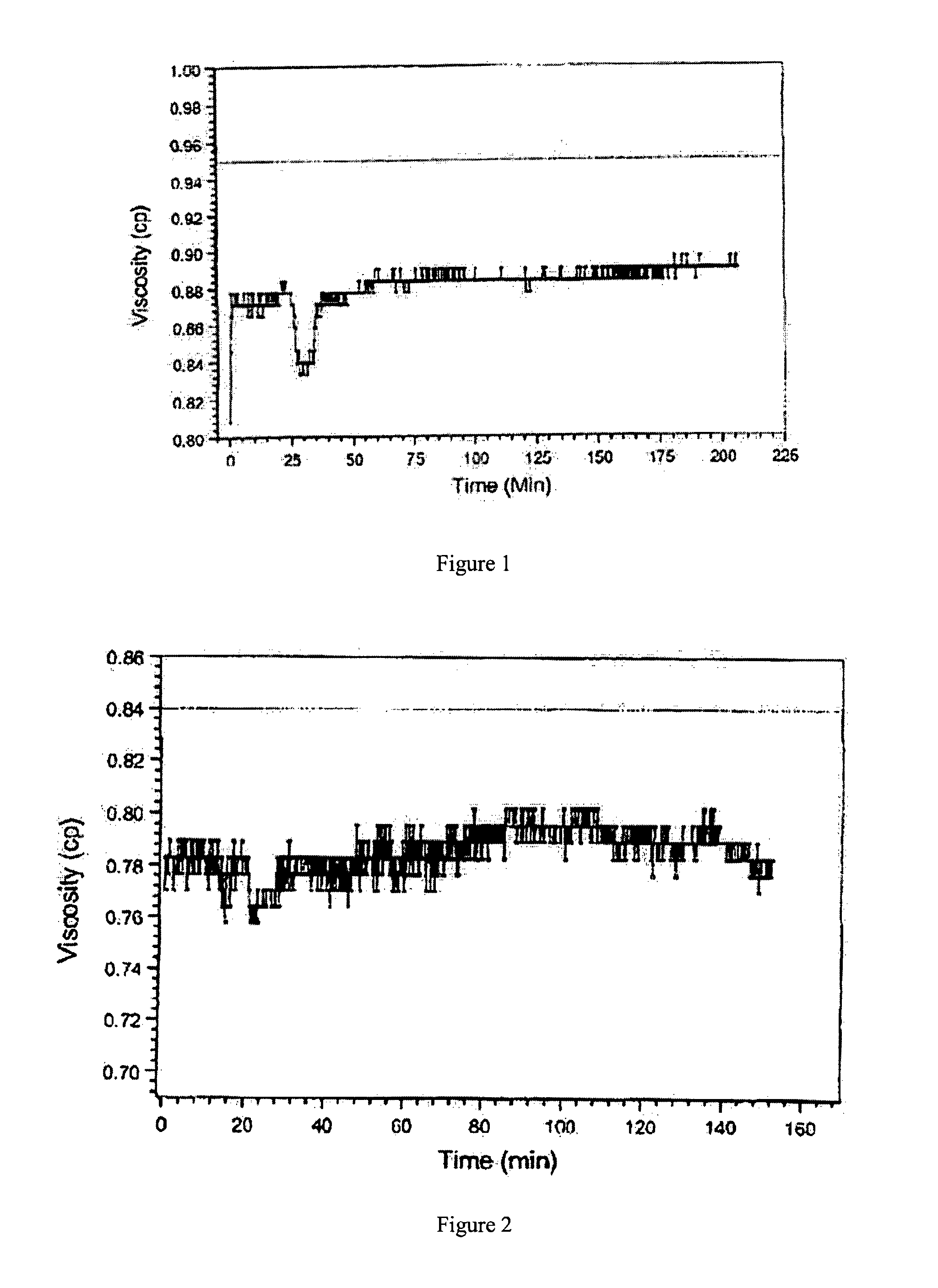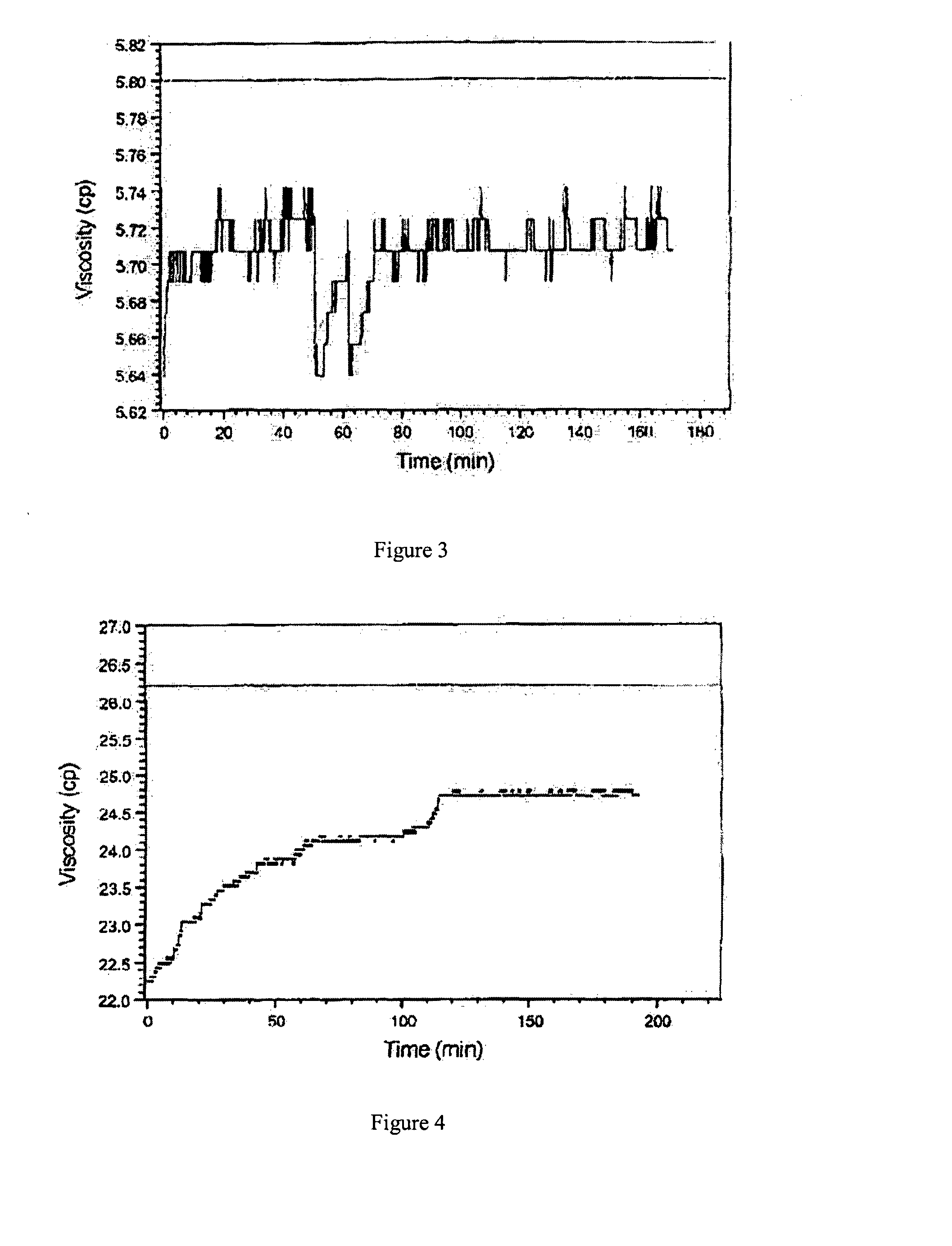Method and Apparatus for Treatment of a Fluid
a technology for treating methods and fluids, applied in combustion-air/fuel-air treatment, process and machine control, machines/engines, etc., can solve problems such as difficult prediction, large problems, and ineffectiveness of paraffin treatment, and achieve the effect of reducing the apparent viscosity, and reducing the surface tension of petroleum fuels
- Summary
- Abstract
- Description
- Claims
- Application Information
AI Technical Summary
Benefits of technology
Problems solved by technology
Method used
Image
Examples
example 1
[0062]Ethanol is an important additive in gasoline sold in some markets. This example was conducted on gasoline with 20% ethanol. It is interesting to note that pure gasoline has very low viscosity, about 0.8 cP at 10° C. However, ethanol has quite high viscosity, about 1.7 cP at 10° C. Therefore, a mixture of gasoline with 20% ethanol has viscosity of about 0.95 cP.
[0063]A strong magnetic field of 1.3 T was applied to the sample for 5 seconds. The apparent viscosity dropped to 0.81 cP, but soon climbed to about 0.865 cP, fluctuating there and gradually increasing, as seen in FIG. 1. However, after 3 hours, the apparent viscosity remained at 0.88 cp, 8% below the original value. The apparent viscosity remained substantially below the original value 200 minutes after the application of magnetic field. We expect that the viscosity would return to 0.95 cp in about 10 hours.
example 2
Gasoline with 10% MTBE
[0064]MTBE (methyl tertiary butyl ether) is still widely used as gasoline additive. This example was conducted on gasoline with 10% MTBE. Different from ethanol, MTBE has quite low viscosity. Therefore, a mixture of gasoline with 10% MTBE at 10° C. has a viscosity of 0.84 cP, slightly higher than that of pure gasoline.
[0065]A magnetic field of 1.3 T was applied to the sample for about 1 second. The apparent viscosity immediately dropped to 0.77 cP. Then it was fluctuating around 0.78 cP for several hours and gradually increasing, as can be seen from FIG. 2.
[0066]However, as shown in FIG. 2, after more than 2 hours, the viscosity remained about 7% below 0.84 cP, the previous value. The apparent viscosity remained substantially below the original value 150 minutes after the application of magnetic field. This behaviour is quite similar to that of gasoline with ethanol in a pulse magnetic field, but we also noted that for gasoline with 10% MTBE the magnetic pulse ...
example 3
[0067]Diesel has much higher viscosity than that of gasoline. Example 3 was conducted on pure diesel and diesel with 0.5% of ethylhexyl nitrate (EHN) as additive. The behaviour for both samples is quite similar because the volume fraction of the additive is very small.
[0068]As shown in FIG. 3, diesel has a viscosity of 5.80 cP at 10° C. which is considerably higher than that of gasoline. After application of a magnetic field of 1.1 T for 8 seconds, the apparent viscosity dropped to 5.64 cP, then remained at 5.70 cP for several hours. The apparent viscosity remained below the original value 160 minutes after the application of magnetic field.
[0069]Further testing may be required to determine the optimal duration of magnetic pulse. On one hand, since diesel is more close to crude oil, it is expected that the magnetic field induced dipolar interaction should be stronger than that in gasoline. On the other hand, since the diesel's original viscosity is higher than that of gas...
PUM
| Property | Measurement | Unit |
|---|---|---|
| magnetic | aaaaa | aaaaa |
| critical magnetic field strength | aaaaa | aaaaa |
| Tc | aaaaa | aaaaa |
Abstract
Description
Claims
Application Information
 Login to View More
Login to View More - R&D
- Intellectual Property
- Life Sciences
- Materials
- Tech Scout
- Unparalleled Data Quality
- Higher Quality Content
- 60% Fewer Hallucinations
Browse by: Latest US Patents, China's latest patents, Technical Efficacy Thesaurus, Application Domain, Technology Topic, Popular Technical Reports.
© 2025 PatSnap. All rights reserved.Legal|Privacy policy|Modern Slavery Act Transparency Statement|Sitemap|About US| Contact US: help@patsnap.com


